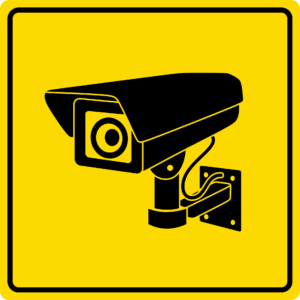
Scared Yet?
I just read another clickbait article trying to scare all of us about CCTV security camera privacy and security.
This one mentions some research done by what I’m sure are some decent geeks that found an interesting tidbit.
Looking at the Internet traffic coming from a smarthome security camera you can figure out if anyone is home.
It’s an intellectually interesting premise. Cloud based cameras send video through the Internet to be processed and stored at a remote data center.
The volume of data uploaded varies with the amount of visual activity the camera sees. Smart analytics can use this as a virtual footprint to see when the house is empty.
The Hidden Agenda
Why is this making news?
There have been a lot of headlines about invasion of privacy and the lack of security in smarthome CCTV security camera systems. Including big names like Ring, Nest and a bunch of lesser-known, but widely used brands and systems.
At the Apple Worldwide Developer’s Conference WWDC) 2020, Apple previewed a version of the HomeKit that includes facial recognition & alerts for your CCTV security camera.
Apple has made privacy and security an integral part of their marketing efforts and corporate culture.
This research suggests that even Apple HomeKit encrypted CCTV security camera footage is not really secure.
Fuhgeddaboudit
Nothing to see here – Literally!
The practical, real-world implication of this kind of lab trick is minimal to nil.
Without access to the actual video feed of your CCTV security camera, there is very miniscule risk to your privacy.
Anyone interested in knowing when your house is empty would need to hack into your own network inside your home.
The thief would need to be physically near or actually inside your house to do that.
They need a level of computer hacking that would be a huge waste of their talent as a common criminal.
Alternatively, measuring the upload usage of your Internet connection might be done at the remote end of your Internet service.
That would require tremendous technical skills or an “inside job” at your Internet Service Provider (ISP) equipment or operations center.
Fast And Easy
I’m not an expert on criminal behavior, but I do know that most thefts are crimes of opportunity, not methodically planned incursions.
Watching the entry and exit doors of a home, counting cars coming and going, and a few other visual observations/surveillance are much easier ways to determine when a home is empty.
Practical Security Camera Advice
But as long as we have criminals, I think the arguments about privacy and security will continue.
I’m not downplaying this – Protecting your privacy and insuring physical security are very important.
That’s why the home protection and security industry continues to be a large and growing specialty.
For many of us, there is a simple no-tech solution that can guarantee what no gadget or technology can do to insure 100% privacy:
Use only outside cameras!
Just do not install any cameras inside your home. No worry about turning them on or off when you leave or re-enter your home.
Never again worry about whether Amazon, Apple, Google, or some engineer in a far-away company is watching everything you do.
Forget about software or firmware bugs, clever hardware tricks, or other methods to bypass the questionable security in many popular products.
Don’t go crazy with concerns about using complex passwords, changing passwords, fingerprints, faceprint, or other mechanisms to try and limit access to the camera’s video feed.
Outside cameras only show and record what can be seen anyway by neighbors or passersby.
Of course you should have password, logins, and follow recommended security practices, but worst case, if someone hacks into your outdoor cameras, what will they really see?
The Real Security Camera Risk
Working with a range of clients, the most common problem I have found is complacency.
Homeowners are not geeks constantly looking at their camera feeds, tweaking settings, playing with fancy alerts or notifications.
The biggest problem I run into are systems that have been offline for weeks or months at a time.
Many different reasons, but the main cause is that many homeowners have camera systems for piece of mind, not daily use.
They want the camera and recordings to be available if something happens, which they hope never will.
So after the initial few days or weeks of having fun playing with the cameras, watching people walking by, or trying to catch the exact moment the post office or FedEx truck pulls up, the surveillance system isn’t checked very often.
Take a balanced perspective. Do consider a reliable camera system as part of your smarthome security efforts. But don’t get paranoid about the hysteria in the media.
Do think very carefully if you use any indoor cameras and check everything – camera, system, and archived footage regularly to insure proper operation.
